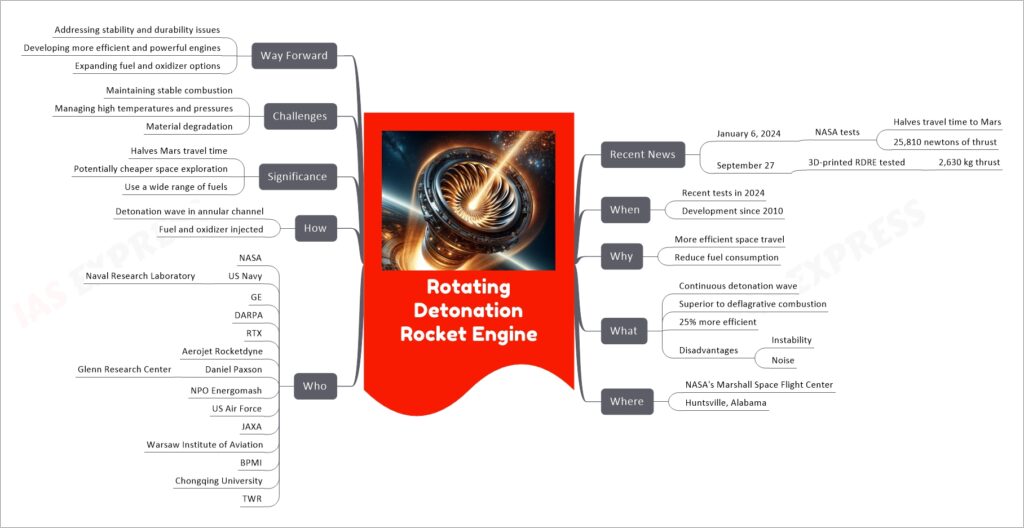Rotating Detonation Rocket Engine

In simple terms, the Rotating Detonation Rocket Engine (RDRE) represents a significant advancement in rocket propulsion technology. Unlike traditional rocket engines that rely on deflagrative combustion, the RDRE uses a continuous detonation wave, making it potentially more efficient and powerful. This technology, still in development, promises to reduce travel time to destinations like Mars, offer more cost-effective space exploration, and use a broader range of fuels. However, it faces challenges like achieving stable combustion over long periods, handling high temperatures and pressures, and preventing material degradation.

